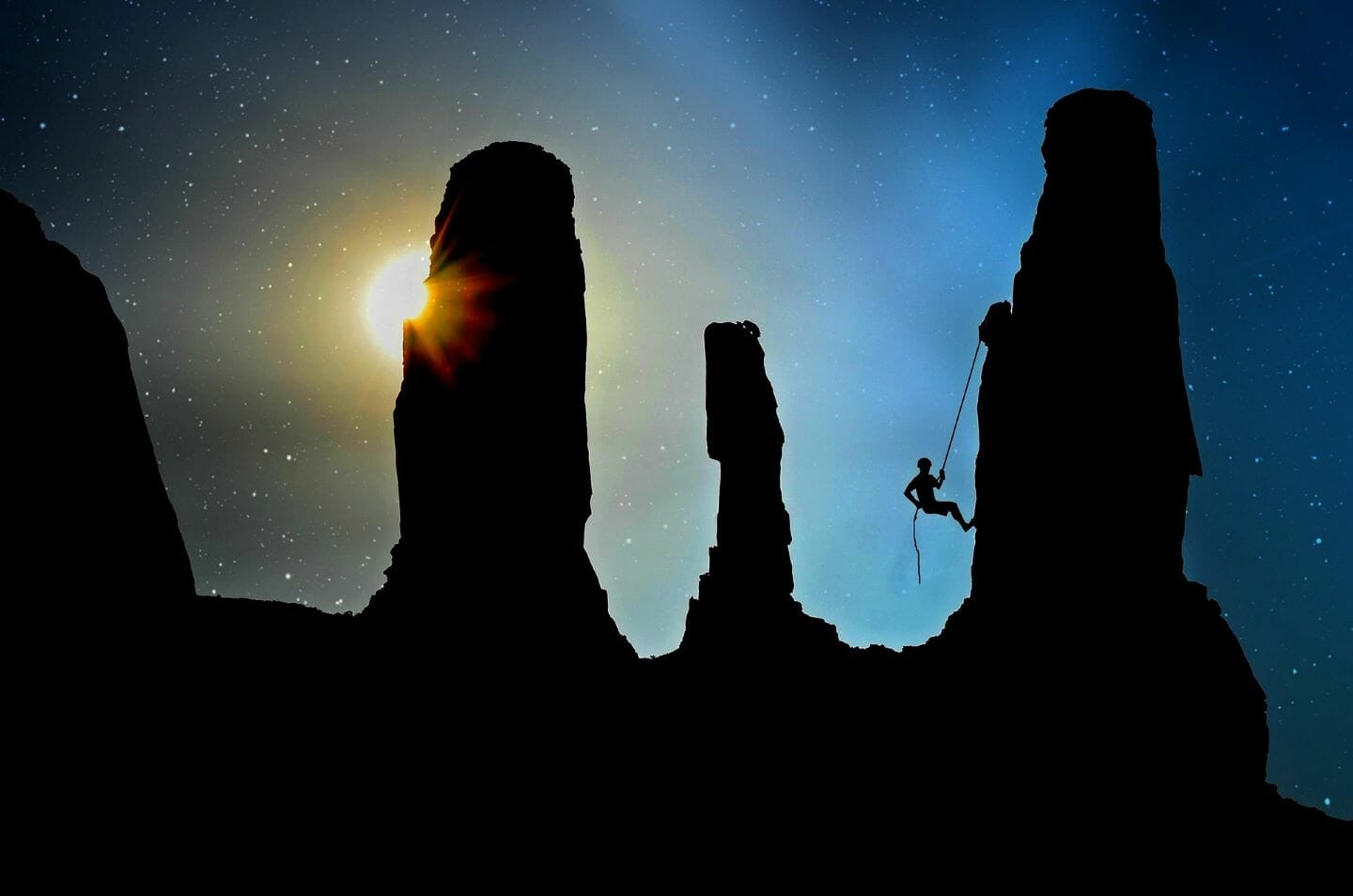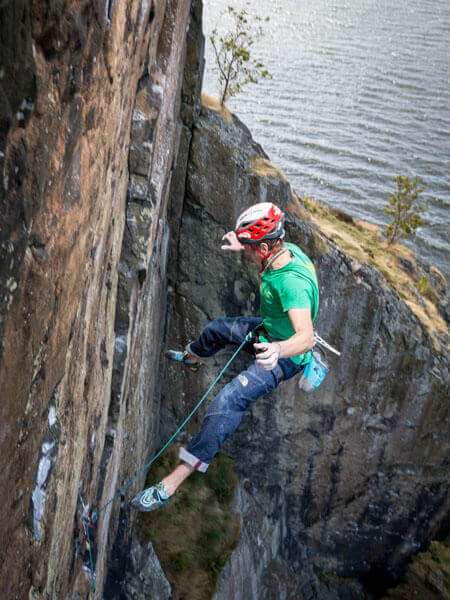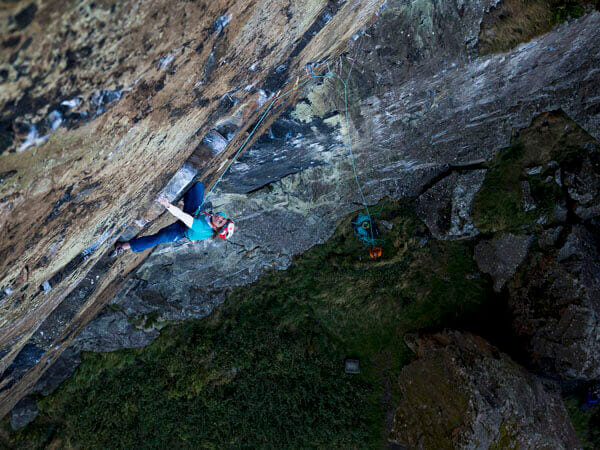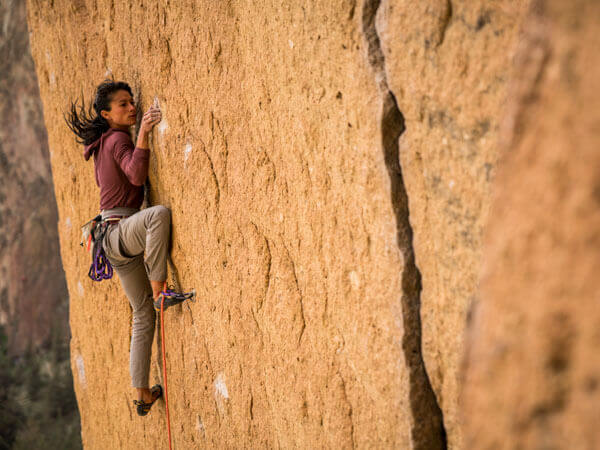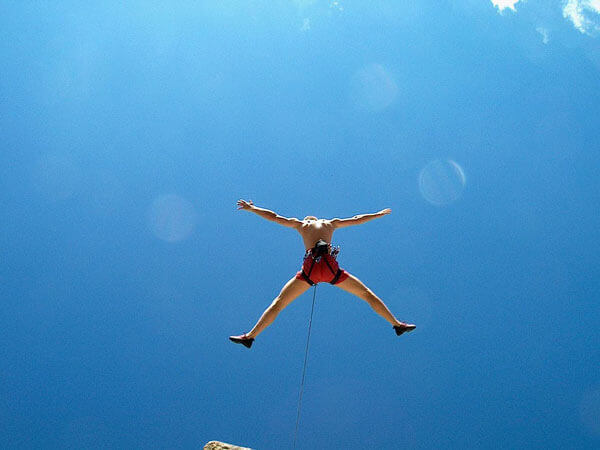Climbers tend to be brave and fearless. The fear of falling only exists in books. If you’re afraid, you just avoid such situations and don’t deliberately put yourself in “danger”.
I didn’t really experience fear in the early days. I was able to comfortably climb the routes that I had set out to do. I didn’t have any falls. However, as is human nature, at some point ambition sets in and you want to get to the next level of difficulty. And there it was: the fear of falling, hitting me full force.
How the fear of falling has affected me
What was contained in the hall quickly became a full-blown panic on the rock. Most of the time, I can tell that something is wrong right from the start. My body doesn’t seem alert and my breathing is shallow. I’m not looking forward to climbing, but I feel an incredible inner pressure building up. “I can’t fail, I have to climb and most importantly, I can’t fall.” So I get up there. I climb the first few steps, but I can’t keep going.
Every movement feels exhausting and there is no flow. I don’t think about the moment, but am always one step ahead. I think about the crux and everything inside my body tenses up. Secretly, I already know that I will fail.
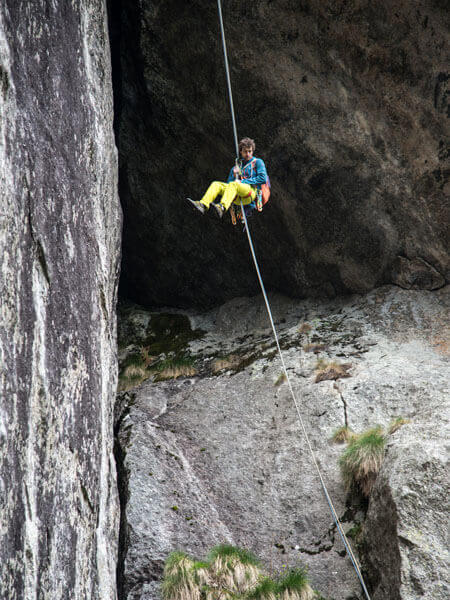
Once I reach the first difficult section, I hesitate for far too long. I check where the last quickdraw is and the falling distance. A quick look up tells me that it’s definitely too far to the next quickdraw and I’ll never make the moves to get there. I get nervous, my hands start to sweat and my pulse races. My breathing stops and my arms become weak. A quick glance down tells me that if I fall, I die. Desperate, I shout “watch me!” and climb down to the last quickdraw. I’m still clawing at the quickdraw because I don’t even trust the rope or my partner.
Climbing any further is out of the question. I can no longer think clearly and logically. I am disappointed. All of my training for nothing!
Consistent inconsistency
Three days later I grab my climbing shoes and head to the crag again. Why? To be honest, I’m not sure. The day feels like any other with just one difference: today I’m looking forward to climbing. I have the courage to take on unknown and difficult routes and I am not afraid of falling. I am fully aware of the distances between hooks and where I could possibly fall.
Every one of my moves feel right and my head is still. I’m literally flying up the wall with minimal effort and I can even enjoy the view. I don’t think about the hook spacing for a second and my mind is alert. I feel free and really strong. When I reach the braking carabiner, I feel reassured that I can climb after all. Or was that all a coincidence?
I’m confused. One day I can’t do a 4b, the next day I can do a 6a redpoint. There’s something wrong with me, isn’t there?
The reasoning behind the fear of falling
When I realized this contradiction, I began to do some research to get to the bottom of it. You can only solve a problem if you know where it comes from. My advice to anyone struggling with the fear of falling is to listen to yourself and to question where it comes from. This fear feels different to everyone.
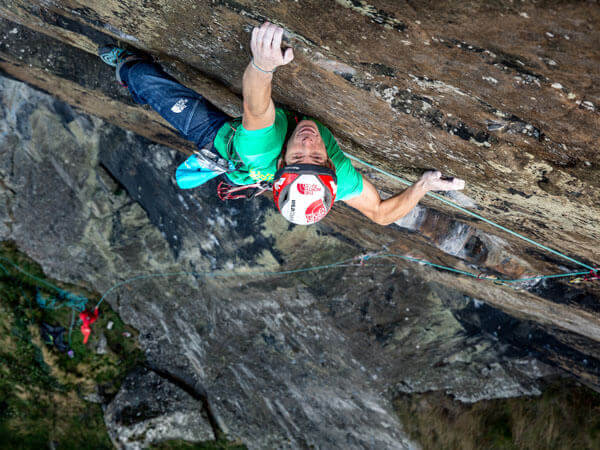
The more I started to seriously work on my problem, the more I noticed other climbers exhibiting similar behaviour patterns. These include: hesitancy as soon as you climb over the quickdraw, extreme overextension when hooking the rope, cramped climbing in easy spots and clinging to every single hold.
I’ve asked some climbers about this. The first thing I noticed was that no one likes or wants to talk about it. Fear of falling is a sort of taboo subject. But as soon as you have the courage to face your fears, constructive and interesting conversations about feelings, doubts and fears you have never heard of, and which often have nothing to do with climbing, can take place. Fear of failure is often at the forefront, and problems from everyday life are transferred to the sport. And believe me, there are a lot more climbers with fear of falling than you think.
Tracking down the problem
It helped me at first to admit that I am afraid.
My anxiety arose on my first day on the crag. My belay partner at the time skilfully ignored all rope commands and a “watch me” didn’t help. Since then, it has been a struggle for me to trust my partner and to understand that the rope will catch me. At the time, lead climbing felt like free soloing.
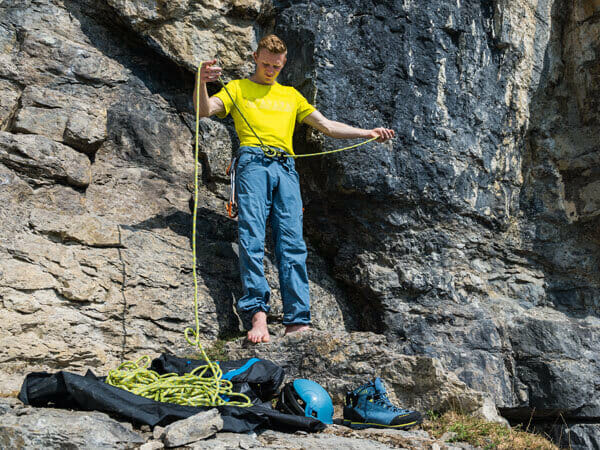
If you develop a problem with trust or have had a negative experience, it’s advisable to communicate this openly and insist on following the rope commands. “Watch me” is simply “watch me.” It’s also perfectly fine to change climbing partners should they play by their own rules. To get to the bottom of the problem and find a solution, you first need to be honest with yourself and your climbing partner.
Many people feel misunderstood and as if they are not being taken seriously. But you have to express the fear clearly!
Step by step – quickdraw by quickdraw
The next stop on the journey should be to question your own feelings. Is the fear justified or is it all in your head? Do I let my emotions be my guide, or can I make use of my reason?
Basically, you should listen to your gut. However, when you’re in panic mode, the facts may be perceived in a distorted way. For example, a hook spacing may appear much wider in my mind than it is in reality. A potential fall may seem fatal in your mind, when in reality, it’s just a maximum of two metres. Before starting a route, it helps to look at the hook spacing to assess the situation.
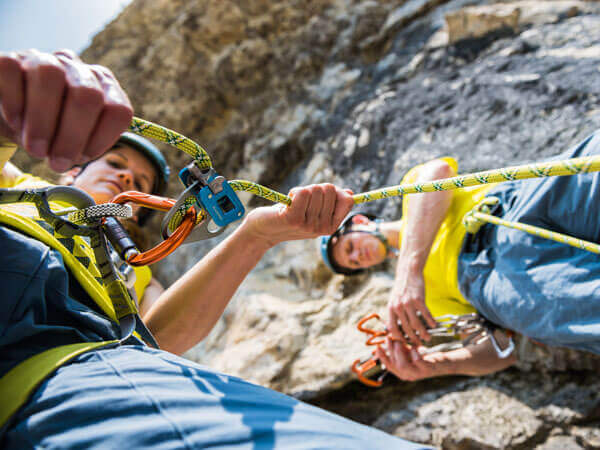
If you’re on the route, don’t overexert yourself right at the beginning. Taking small steps strengthens your self-confidence – that is the key to success.
To avoid a panic attack, I set myself certain rules because a routine helps me feel safe: first I tie myself in, then put on my shoes, chalk my hands and do a partner check.
From the very first move, I solely focus on the current move I am doing, I never think about the next passage. I think from quickdraw to quickdraw and don’t put any pressure on myself to reach the braking carabiner. An important building block here is conscious breathing: the more evenly I breathe, the calmer my mind.
I chant mantras internally: “You have infinite strength”, “The grip is a grip”, “You can hang in peace”. If you say these sentences to yourself often enough, you will end up believing them!
Self-awareness: you are strong, you can do it!
In the end, it all boils down to the self-confidence you need to constantly build in order to have the strength to overcome this problem.
If you start off feeling miserable after failing again, just know it will get better as you go. You will no longer see failure as a failure. You will be more aware of it and you can draw positive benefits from it as you learn how to deal with it. Failure doesn’t make you weak, it makes you stronger! You will get to know yourself and your limits more intensely.
Although I now have more positive days on the rock, I still experience fear and feel like I’m back to square one. Why am I doing this to myself? Quite simply, my love of climbing outweighs the fear of falling and the fear of failure. When you’re passionate about something, you put up with a lot.
Be brave and don’t give up!
There should be a change in thinking: some climbing gyms set a good example and offer special fall training courses, but the community should not ignore this topic either. After all, fear is natural and keeps us from extinction.
If you are also afraid of falling, just know that you are not alone. Be brave and be open with your fear. It is nothing to be ashamed of. Fathom the source, feel it in you and take hold of it! If you love climbing as much as I do, it’s worth every bit of effort. There will be bad days when you question everything and want to give up. But keep going! Believe in yourself and persevere through these moments.
Knowing that you’ve climbed without fear, no matter how difficult, is priceless. This freedom is worth fighting for. If you find yourself despairing again, hold on to those moments and feel free to catch your breath and take a few days off climbing.
In time, there will be more sunny days than rainy days. It takes a lot of patience, discipline and strength to overcome the fear of falling, but it would be boring if everything was easy. It pays off to be persistent!
“Strength doesn’t come from success, it comes from failure.”
When you’re one stop further down the line, you can move on to actual fall training.
